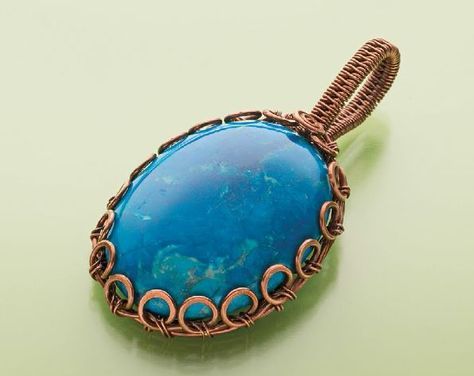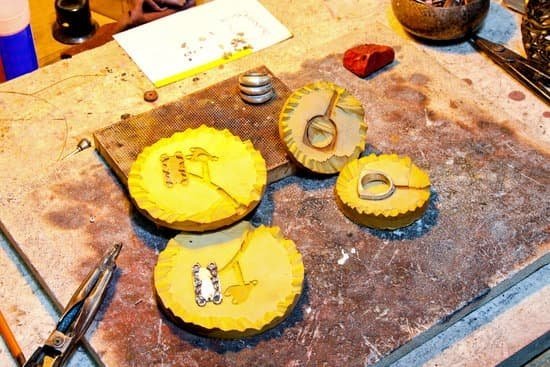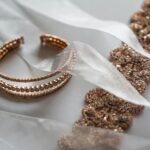How are diamonds set in jewelry? This is a question that has fascinated both jewelers and enthusiasts for centuries.
The art of diamond setting is not just about placing a gemstone into a piece of jewelry; it is about enhancing its natural beauty and creating stunning designs that capture the light and sparkle with brilliance. In this article, we will delve into the world of diamond setting, exploring the various techniques used to showcase these precious stones in their full glory.
Diamonds come in various shapes and sizes, each with its own unique charm and brilliance. Before they are set into jewelry, diamonds undergo a cutting process to enhance their natural radiance. The cut of a diamond determines how light is reflected within the stone, making it crucial to find the perfect shape that will maximize its beauty when set in jewelry.
However, finding the right shape is only one aspect of diamond setting. Equally important is choosing the right metal and setting style to complement the gemstone’s attributes. Different metals, such as gold or platinum, can create different visual effects and enhance the overall design. Meanwhile, various settings, such as prong-setting or bezel-setting techniques, offer different levels of security while presenting the diamond in its best possible light.
In this introduction section of our article on how diamonds are set in jewelry, we have just scratched the surface of this intricate craft. By understanding the intricacies involved in diamond setting, you will gain a deeper appreciation for the mastery and craftsmanship that go into creating dazzling pieces of jewelry. So join us as we explore the various techniques used by artisans to bring out the full potential of these exquisite gems in their settings.
A Brief Exploration of Diamond Cuts
Diamond cut refers to the way a diamond has been shaped and faceted to enhance its brilliance and sparkle. The cut of a diamond plays a crucial role in determining its overall beauty and value. When a diamond is cut with precision, it reflects light in a way that maximizes its natural radiance.
There are many different diamond cuts available, each with its own unique characteristics and charm. Some popular diamond cuts include the round brilliant cut, princess cut, emerald cut, cushion cut, and marquise cut. Each cut has specific proportions and facets that are carefully calculated to optimize the stone’s brilliance.
The round brilliant cut is the most popular diamond shape due to its exceptional light performance. Its numerous facets allow for maximum internal reflection of light, resulting in incredible sparkle. The princess cut, on the other hand, is known for its sharp corners and brilliant faceting, creating an elegant and modern look.
When choosing a diamond cut, it’s essential to consider personal preference as well as the wearer’s style and taste. Some cuts may suit certain jewelry designs better than others. For example, a solitaire engagement ring often features a round or princess-cut diamond to showcase its simplicity and timeless elegance.
| Diamond Cut | Characteristics |
|---|---|
| Round Brilliant Cut | Most popular; exceptional light performance; maximum internal reflection |
| Princess Cut | Sharp corners; brilliant faceting; elegant and modern |
| Emerald Cut | Step-cut faceting; rectangular shape; elegant and sophisticated |
| Cushion Cut | Pillow-like shape; soft and romantic appearance |
| Marquise Cut | Oval-shaped with pointed ends; elongating effect on fingers |
The Importance of Choosing the Right Metal
When it comes to setting diamonds in jewelry, choosing the right metal is essential to enhance the overall beauty and durability of the piece. The metal serves as the framework that holds the diamonds securely in place, ensuring that they are showcased to their full potential. Different metals offer various benefits and aesthetic qualities, allowing individuals to customize their diamond jewelry according to their preferences.
One popular metal choice for diamond settings is platinum. Known for its strength and durability, platinum offers excellent protection for diamonds while also providing a luxurious and elegant appearance. Platinum prong settings, for example, are a classic choice that showcases diamonds prominently by using small metal prongs to secure them at multiple points. This allows more light to enter the stone, enhancing its brilliance.
Another commonly used metal in diamond settings is gold. Yellow gold adds a warm and traditional touch to diamond jewelry, while white gold provides a modern and sleek look. Gold bezel settings are a popular option for individuals seeking ultimate protection for their diamonds. In this setting, a thin strip of metal surrounds the entire circumference of the diamond, securing it securely in place while adding a contemporary elegance.
In addition to platinum and gold, there are also other metals that can be used for diamond settings, such as silver and titanium. However, it is important to consider factors such as durability, hypoallergenic properties, and compatibility with different skin tones when choosing these alternative metals.
When choosing the metal for a diamond setting, it is crucial to take into account personal style preferences, lifestyle factors (such as daily activities), budget considerations, and practicality. By carefully selecting the right metal for a specific diamond setting style and individual needs, one can ensure that their precious stones are not only beautifully displayed but also protected for years to come.
| Metal | Advantages |
|---|---|
| Platinum | Strength, durability, luxurious appearance |
| Yellow Gold | Warm and traditional look |
| White Gold | Modern and sleek appearance |
| Silver | Affordability, versatility in design |
| Titanium | Durability, lightweight, hypoallergenic properties |
Prong Setting
The prong setting is one of the most popular and traditional methods used to set diamonds in jewelry. This technique involves using small metal claws, known as prongs, to secure the diamond in place while allowing maximum light to enter the stone, enhancing its brilliance and sparkle. Prong settings are often seen in engagement rings and solitaire diamond jewelry due to their ability to showcase the center stone prominently.
There are several variations of prong settings, including four-prong, six-prong, and even more elaborate designs with more prongs. The number of prongs used depends on the shape and size of the diamond, as well as personal preference. Four-prong settings are commonly chosen for round brilliant-cut diamonds because they offer a balance between security and visibility.
To achieve a prong setting, skilled jewelers carefully bend each individual prong around the diamond’s girdle (the widest part of the stone) and tighten them securely. The prongs can be rounded or pointed depending on the desired aesthetic. Rounded prongs provide a softer look, while pointed prongs add a bit of drama to the design.
Key Features of Prong Setting:
- Maximum Light Reflection: The open design of a prong setting allows light to enter from all angles, resulting in excellent light reflection through the diamond.
- Security: Despite its delicate appearance, a properly executed prong setting provides excellent security for the diamond.
- Versatility: Prong settings can be adapted to accommodate various shapes and sizes of diamonds.
- Easy Maintenance: Cleaning and maintenance are relatively simple with this setting as it does not require any specialized care.
The classic elegance of a prong setting makes it a timeless choice for showcasing diamonds in jewelry. Whether you prefer a solitaire engagement ring or a pair of diamond stud earrings, this technique highlights the beauty of each individual stone while offering durability and longevity. Prong settings have stood the test of time and continue to be cherished by jewelry lovers worldwide.
Bezel Setting
The bezel setting is a popular choice for diamond jewelry due to its ability to provide both protection and modern elegance. This section will explore the unique features and benefits of the bezel setting, as well as its history and different variations.
The Features and Benefits of Bezel Setting
The bezel setting involves encasing the diamond with a metal rim that surrounds its outer edge. This creates a secure and protective barrier that holds the diamond in place, reducing the risk of it becoming loose or falling out. Additionally, the metal rim provides extra support, making the diamond less susceptible to chipping or scratching.
Aside from its protective qualities, the bezel setting also offers a sleek and modern aesthetic. The metal rim can be customized to fit closely against the shape of the diamond, enhancing its overall appearance. The smooth and clean lines of this setting create a contemporary look that is perfect for those seeking a modern and elegant style.
A History of Bezel Setting
Although commonly associated with contemporary jewelry design, the bezel setting has a rich history that dates back centuries. It was first popularized during ancient times when gemstones were set in protective mounts to ensure their longevity. The technique has evolved over time, adopting various styles and materials depending on cultural preferences and technological advancements.
Variations of Bezel Setting
There are several variations of bezel setting that allow for customization based on individual preferences. One such variation is the half-bezel setting, which leaves part of the diamond exposed while still providing some protection. Another option is the flush or gypsy setting, where the stone is placed directly into a hole in the metal band so that it sits flush with its surface.
Overall, the bezel setting offers a combination of protection and contemporary elegance for diamond jewelry. Its timeless appeal and customizable options make it suitable for various occasions and personal styles. Whether used alone or in combination with other settings, the bezel setting is a versatile choice that allows diamonds to truly shine.
Pave Setting
Pave setting is a popular technique used in the jewelry industry to create a dazzling display of tiny diamonds that maximizes sparkle. In this method, multiple small diamonds are set closely together, creating the illusion of a continuous surface of diamonds. Pave (pronounced pah-vey) comes from the French word “pavé,” which means paved or cobblestoned. This setting style gets its name because it resembles a cobblestone pathway with small stones placed side by side.
One of the main advantages of pave setting is its ability to enhance the brilliance and fire of a diamond. When numerous smaller diamonds are clustered together in close proximity with minimal metal visible, light can pass through each diamond more easily and bounce off their facets, resulting in an eye-catching sparkle.
To achieve a pave setting, highly skilled jewelers meticulously set tiny diamonds into small holes or grooves on the surface of the jewelry piece. The diamonds are then secured into place using tiny beads or prongs, creating a continuous surface of shimmering gemstones.
There are various designs and styles for pave settings. Some common ones include full pave, where the entire surface area is covered with diamonds; half-pave, where only half of the surface area is covered; and micro-pave, which features even tinier diamonds for an even more intricate look. Pave settings can be found in rings, earrings, pendants, bracelets, and other types of jewelry items.
Some benefits to consider when choosing pave setting for your diamond jewelry include its ability to maximize sparkle and enhance the overall brilliance of your piece. Additionally, the closely set diamonds create an illusion of a larger center stone without actually increasing its carat weight significantly. Moreover, pave settings are versatile and can be used to create various designs and patterns depending on personal taste and style preferences.
When it comes to caring for your pave-set diamond jewelry, regular maintenance is essential to ensure its longevity and to prevent any gemstone loss. It is recommended to clean your jewelry regularly using a gentle jewelry cleaner and a soft brush to ensure no dirt or residue accumulates around the tiny diamonds.
Additionally, it’s advisable to have your pave-set jewelry inspected by a professional jeweler at least once a year to check for any loose or damaged stones and for any necessary repairs.
Overall, pave setting offers an elegant and sophisticated look that maximizes the brilliance of your diamonds. This technique creates a beautiful display of sparkle, making it a popular choice for those looking to add extra dazzle and glamour to their jewelry collection.
Channel Setting
Channel setting is a popular technique used to incorporate diamonds into jewelry, providing a sleek and continuous design. This setting involves carefully placing multiple diamonds next to each other, creating a channel or groove between them. The diamonds are held in place by two metal walls on the sides, securely protecting them while allowing maximum exposure and sparkle.
One of the key advantages of channel setting is its ability to seamlessly incorporate diamonds into various types of jewelry, including rings, bracelets, and necklaces. The continuous line of diamonds creates a stunning and uninterrupted flow, adding an elegant touch to any piece. This setting is particularly favored for wedding bands or eternity rings, where the diamonds symbolize everlasting love.
When it comes to choosing the right metal for a channel-set piece, platinum and white gold are popular options due to their ability to enhance the brilliance of the diamonds. These metals provide a bright and reflective background against which the diamonds can shine. It is important to note that channel setting requires precise craftsmanship, as each diamond must be carefully set within the metal walls without any visible gaps.
| Advantages | Considerations |
|---|---|
| Elegant and seamless design | Precise craftsmanship required |
| Securely holds multiple diamonds | Potential difficulty in resizing |
| Suitable for various types of jewelry | Limited flexibility in terms of diamond shapes |
Tension Setting
Tension setting is a modern and daring technique used in diamond jewelry that creates the illusion of suspended diamonds. This setting is perfect for those who desire a bold and contemporary look, as it showcases the beauty of the diamonds while allowing light to pass through freely. With tension setting, the diamonds appear to be magically held in place without any visible prongs or metal.
The process of tension setting begins with a specially designed metal band that has grooves carved into it. These grooves are carefully calculated and calibrated to hold the diamonds securely in place. The jeweler then uses extreme pressure to insert the diamonds into these grooves, causing them to become slightly compressed within the band. This compression creates tension between the metal and the diamond, holding it tightly in place.
One of the key benefits of tension setting is that it allows for maximum light exposure to the diamond, resulting in enhanced brilliance and sparkle. Since there are no prongs or metal covering the sides of the diamond, light can enter from multiple angles, emphasizing its natural radiance. Additionally, tension settings give the illusion of a larger diamond since there is less metal obstructing its view.
Overall, tension setting requires great skill and precision from both jewelers and designers. It is important to note that due to its unique nature, tension-set diamonds require extra care and maintenance. Regular inspections by a professional jeweler are recommended to ensure that all stones are securely in place and to address any potential issues.
Exploring the Intricate Process of Diamond Setting
The process of diamond setting involves intricate craftsmanship, attention to detail, and a deep understanding of the properties of diamonds. From the initial design to the finished masterpiece, every step is crucial in creating a piece of jewelry that showcases the brilliance and beauty of diamonds. In this section, we will explore the intricate process of diamond setting and shed light on the various stages involved.
Designing and Planning
The first step in the process of diamond setting is designing and planning the piece of jewelry. This involves working closely with a skilled jeweler or designer to bring your vision to life. During this stage, considerations such as the type of metal, setting style, and overall design concepts are discussed. The jeweler will take into account factors like the size, shape, and quality of the diamonds that will be used.
Preparing and Setting
Once the design is finalized, the preparation phase begins. This includes shaping or resizing the metal components to fit the stones perfectly. Experienced jewelers take meticulous care to ensure that each diamond is set securely using specialized techniques such as hammering or bending. Depending on the chosen setting style, different tools may be used to create prongs, bezels, channels, or tension settings.
Finishing Touches
After all diamonds are set in place, it’s time for the finishing touches that elevate a piece from good to exceptional. Jewelers carefully examine each stone for symmetry, making any necessary adjustments to ensure proper alignment. Polishing and cleaning are also essential steps in enhancing the overall appearance of diamond jewelry. By meticulously buffing away any scratches or imperfections acquired during setting, craftsmen reveal its true radiance.
The intricate process of diamond setting requires a combination of artistic skill and technical expertise to create breathtaking pieces of jewelry. From designing and planning to preparing and finishing touches – every stage demands precision and attention to detail. By understanding the intricacies involved in diamond setting, we can truly appreciate the mastery and craftsmanship behind diamonds set in jewelry.
Maintenance and Care
Cleaning and Polishing
To keep your diamond jewelry looking its best, regular cleaning and polishing are essential. Over time, diamonds can accumulate dirt, oils, and other substances that can dull their sparkle. To clean your diamonds at home, you can use a gentle jewelry cleaning solution or create your own by mixing mild dish soap with warm water.
Soak your jewelry in the solution for a few minutes, then gently scrub it with a soft toothbrush. Rinse thoroughly and pat dry with a soft cloth.
In addition to regular cleaning, professional polishing is recommended every few years to remove scratches and restore the brilliance of your diamond jewelry. Professional jewelers have the skills and tools necessary to safely polish diamonds without causing damage. They will assess the condition of your jewelry and determine whether any repairs or adjustments are needed.
Storage and Protection
Proper storage is crucial to protect your diamond jewelry from damage and prevent it from getting tangled or scratched. When not in use, store each piece individually in a soft pouch or lined box to avoid contact with other items that may scratch them. It’s also important to keep your diamond jewelry away from extreme temperature fluctuations, as sudden changes in temperature can cause stress on the metal settings.
If you prefer using a jewelry box with compartments, make sure each piece has its own designated space, preferably lined with a soft fabric like velvet or silk. This will provide an extra layer of protection against scratches.
When wearing diamond rings or bracelets, take care to avoid harsh impact or exposure to chemicals like chlorine bleach or household cleaning agents. These substances can potentially damage both the diamonds and their metal settings.
Regular Maintenance Checks
To ensure the longevity of your diamond jewelry, it’s wise to establish a routine for regular maintenance checks. This involves inspecting each piece for loose stones or weakened prongs that may need repair. If you notice any issues, it’s best to consult a professional jeweler, as they have the expertise and tools required for proper repairs.
Moreover, periodic professional inspections are recommended to assess the overall condition of your diamond jewelry. Jewelers can check the integrity of the settings, inspect for any signs of damage or wear, and perform necessary maintenance such as tightening loose stones or re-tipping prongs.
By following these maintenance and care practices, you can protect the beauty and brilliance of your diamond jewelry so that it can be treasured for generations to come. Remember that regular cleaning, proper storage, and routine maintenance checks go a long way in preserving the value and longevity of your precious diamond pieces.
Conclusion
In conclusion, the process of setting diamonds in jewelry is a true testament to the mastery and craftsmanship that goes into creating these exquisite pieces. From the carefully chosen diamond cuts to the selection of the right metal and setting technique, every step is thoughtfully executed to enhance the brilliance and beauty of each diamond.
The various techniques discussed in this article, such as prong setting, bezel setting, pave setting, channel setting, and tension setting, each have their own unique characteristics and appeal. Whether it’s the classic elegance of a prong setting or the modern protection provided by a bezel setting, there is a style to suit every taste.
It is important to note that the intricate process of diamond setting does not end with the final design. Proper maintenance and care are essential in order to protect the beauty of your diamond jewelry for generations to come. Regular cleaning, inspections, and repairs if needed are all part of ensuring that your diamonds continue to shine brilliantly.
In summary, when it comes to diamond jewelry, it is not just about the stones themselves but also about appreciating the skill and artistry involved in showcasing them. The careful selection of cuts, metals, and settings creates stunning pieces that are not only beautiful but also hold meaning and value. So next time you admire a piece of diamond jewelry, take a moment to appreciate the mastery and craftsmanship behind it.
Frequently Asked Questions
How are diamonds set in prongs?
Diamonds are typically set in prongs using a process called “prong setting.” Prongs are small metal claws or arms that hold the diamond securely in place within the jewelry. To set a diamond, the jeweler carefully bends each prong over the stone, ensuring that it covers a portion of the diamond’s girdle (the widest edge).
Typically, four or six prongs are used to securely hold the diamond and provide adequate protection. The jeweler needs to have precision and skill to ensure that each prong is secured tightly around the diamond without damaging it.
How should a diamond sit in setting?
When properly set, a diamond should sit firmly and securely within its setting while still allowing for maximum light exposure. Ideally, the top part or crown of the diamond should be slightly above or level with the metal surface of the setting.
This allows for optimal light reflection and refraction through the diamond, enhancing its brilliance and sparkle. At the same time, it’s crucial that the depth of the setting matches well with the diamond’s proportions to prevent excessive movement or instability within its placement.
Are diamonds glued to jewelry?
Although there are some types of jewelry where diamonds can be glued onto, such as costume or fashion jewelry, high-quality diamonds are not typically glued to fine jewelry pieces. Instead, they are securely set using various methods like prongs, bezels, channels, or pave settings.
These techniques ensure durability and create an elegant appearance for diamond jewelry designs. Gluing diamonds onto jewelry is generally considered less secure compared to other traditional setting methods since adhesives can weaken over time and may not provide sufficient support for valuable gemstones like diamonds.

Welcome to my jewelry blog! My name is Sarah and I am the owner of this blog.
I love making jewelry and sharing my creations with others.
So whether you’re someone who loves wearing jewelry yourself or simply enjoys learning about it, be sure to check out my blog for insightful posts on everything related to this exciting topic!





